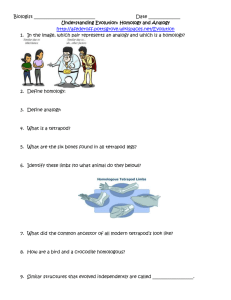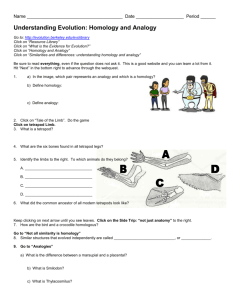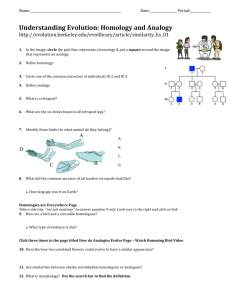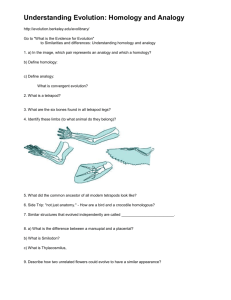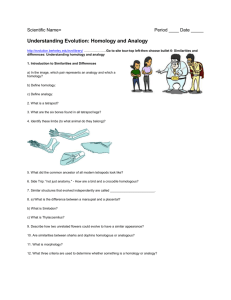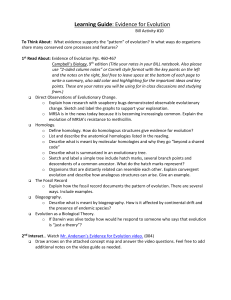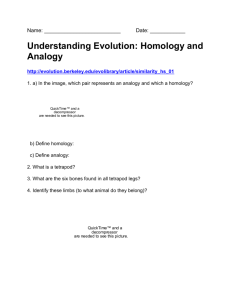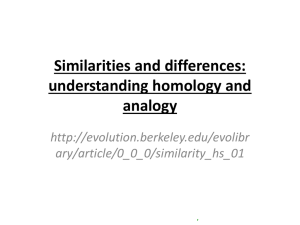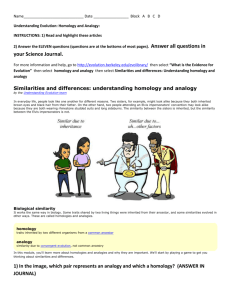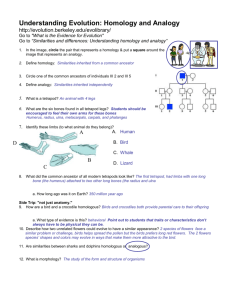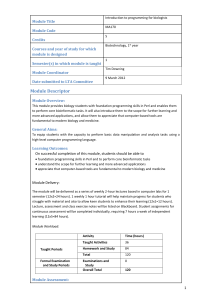Online lab: Homologous Structures
advertisement
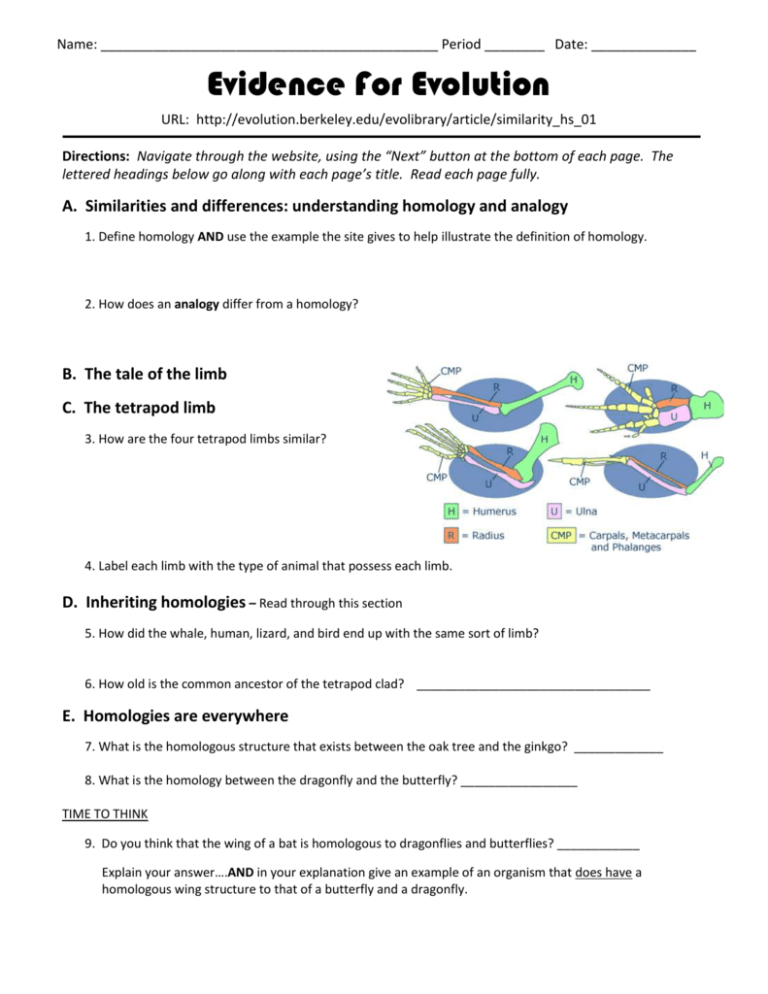
Name: _____________________________________________ Period ________ Date: ______________ Evidence For Evolution URL: http://evolution.berkeley.edu/evolibrary/article/similarity_hs_01 Directions: Navigate through the website, using the “Next” button at the bottom of each page. The lettered headings below go along with each page’s title. Read each page fully. A. Similarities and differences: understanding homology and analogy 1. Define homology AND use the example the site gives to help illustrate the definition of homology. 2. How does an analogy differ from a homology? B. The tale of the limb C. The tetrapod limb 3. How are the four tetrapod limbs similar? 4. Label each limb with the type of animal that possess each limb. D. Inheriting homologies – Read through this section 5. How did the whale, human, lizard, and bird end up with the same sort of limb? 6. How old is the common ancestor of the tetrapod clad? __________________________________ E. Homologies are everywhere 7. What is the homologous structure that exists between the oak tree and the ginkgo? _____________ 8. What is the homology between the dragonfly and the butterfly? _________________ TIME TO THINK 9. Do you think that the wing of a bat is homologous to dragonflies and butterflies? ____________ Explain your answer….AND in your explanation give an example of an organism that does have a homologous wing structure to that of a butterfly and a dragonfly. At the bottom of the “Homologies are everywhere” page, click on the icon and answer the following. 10. So far, you have learned that homologies are anatomical features. Describe below what other types of traits can be homologies. F. Not all similarity is homology 11. Why is the octopus limb not considered to be a homology to the tetrapod limb? G. Analogies 12. Why are the saber teeth of the Thylacosmilus and the Smilodon not considered to be a homology? What trait do they share as a homology? Does the fact that their saber teeth are not a homology mean that they do not share a common ancestor? EXPLAIN H. How do analogies evolve? 13. Read through and watch the activity in this page. I. Homology or analogy? – Circle your answer 14. Do you think that the body shape, fins and flippers of sharks and dolphins are homologies or analogies? J. Studying homologies and analogies 15. What are the various techniques a scientist can use to determine if a trait is a homology? K. Using homologies to reconstruct relationships 16. How do scientists figure out which two animals are more closely related when they look at multiple different species of animals with the same homology? Continue on to the final page called “Test your Understanding.” IN YOUR JOURNAL give a detailed explanation as to why you selected your answer for the question at the bottom of the webpage.
